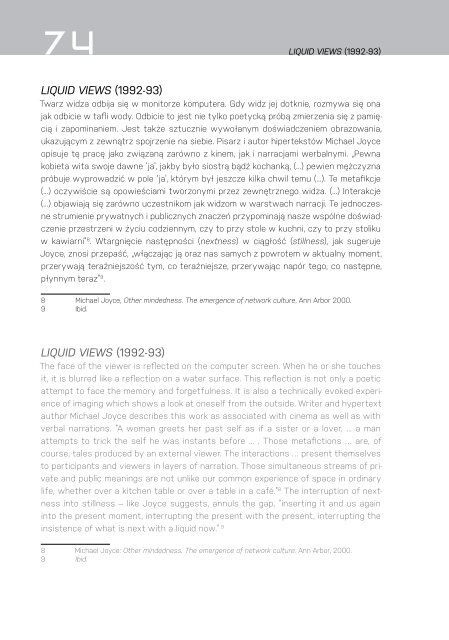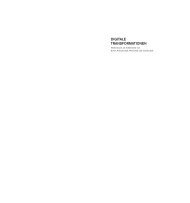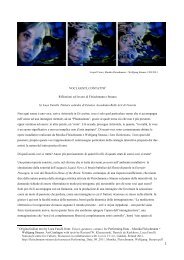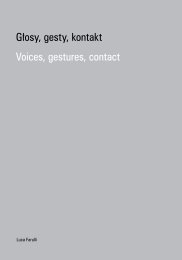Performing Data | Monika Fleischmann + Wolfgang Strauss
Performing Data is a review of Monika Fleischmann´s and Wolfgang Strauss´artistic body of work and a catalogue of their exhibition in Poland 2011. It presents works from Virtual Reality (Home of the Brain) up to Mixed Reality (Murmuring Fields) from Fluid Interface (Liquid Views) up to Floating Interface (Medienfluss) and texts by Ryszard W. Kluszczynski, Derrick de Kerkhove, Luca Farulli. Monika Fleischmann and Wolfgang Strauss from the German Fraunhofer research institute show us an intersection of the body and immaterial digital data. Immersion in data flow causes productive moments of disturbance and suspension, and consequently – a feeling of real physical presence. Fleischmann, Monika; Strauss, Wolfgang: Performing Data | Performowanie danych. National Centre for Culture, Warszawa 2011 in collaboration with Laznia CCArt, Gdańsk, Poland 2011 ISBN 978-83-61587-55-2 (en/pl) http://artline-southbaltic.eu/de/event/performing-data/
Performing Data is a review of Monika Fleischmann´s and Wolfgang Strauss´artistic body of work and a catalogue of their exhibition in Poland 2011. It presents works from Virtual Reality (Home of the Brain) up to Mixed Reality (Murmuring Fields) from Fluid Interface (Liquid Views) up to Floating Interface (Medienfluss) and texts by Ryszard W. Kluszczynski, Derrick de Kerkhove, Luca Farulli.
Monika Fleischmann and Wolfgang Strauss from the German Fraunhofer research institute show us an intersection of the body and immaterial digital data. Immersion in data flow causes productive moments of disturbance and suspension, and consequently – a feeling of real physical presence.
Fleischmann, Monika; Strauss, Wolfgang: Performing Data | Performowanie danych. National Centre for Culture, Warszawa 2011 in collaboration with Laznia CCArt, Gdańsk, Poland 2011 ISBN 978-83-61587-55-2 (en/pl) http://artline-southbaltic.eu/de/event/performing-data/
Create successful ePaper yourself
Turn your PDF publications into a flip-book with our unique Google optimized e-Paper software.
LIQUID VIEWS (1992-93)<br />
LIQUID VIEWS (1992-93)<br />
Twarz widza odbija się w monitorze komputera. Gdy widz jej dotknie, rozmywa się ona<br />
jak odbicie w tafli wody. Odbicie to jest nie tylko poetycką próbą zmierzenia się z pamięcią<br />
i zapominaniem. Jest także sztucznie wywołanym doświadczeniem obrazowania,<br />
ukazującym z zewnątrz spojrzenie na siebie. Pisarz i autor hipertekstów Michael Joyce<br />
opisuje tę pracę jako związaną zarówno z kinem, jak i narracjami werbalnymi. „Pewna<br />
kobieta wita swoje dawne ‘ja’, jakby było siostrą bądź kochanką, (...) pewien mężczyzna<br />
próbuje wyprowadzić w pole ‘ja’, którym był jeszcze kilka chwil temu (...). Te metafikcje<br />
(...) oczywiście są opowieściami tworzonymi przez zewnętrznego widza. (...) Interakcje<br />
(...) objawiają się zarówno uczestnikom jak widzom w warstwach narracji. Te jednoczesne<br />
strumienie prywatnych i publicznych znaczeń przypominają nasze wspólne doświadczenie<br />
przestrzeni w życiu codziennym, czy to przy stole w kuchni, czy to przy stoliku<br />
w kawiarni” 8 . Wtargnięcie następności (nextness) w ciągłość (stillness), jak sugeruje<br />
Joyce, znosi przepaść, „włączając ją oraz nas samych z powrotem w aktualny moment,<br />
przerywają teraźniejszość tym, co teraźniejsze, przerywając napór tego, co następne,<br />
płynnym teraz” 9 .<br />
8 Michael Joyce, Other mindedness. The emergence of network culture, Ann Arbor 2000.<br />
9 Ibid.<br />
LIQUID VIEWS (1992-93)<br />
The face of the viewer is reflected on the computer screen. When he or she touches<br />
it, it is blurred like a reflection on a water surface. This reflection is not only a poetic<br />
attempt to face the memory and forgetfulness. It is also a technically evoked experience<br />
of imaging which shows a look at oneself from the outside. Writer and hypertext<br />
author Michael Joyce describes this work as associated with cinema as well as with<br />
verbal narrations. “A woman greets her past self as if a sister or a lover, ... a man<br />
attempts to trick the self he was instants before ... . Those metafictions … are, of<br />
course, tales produced by an external viewer. The interactions … present themselves<br />
to participants and viewers in layers of narration. Those simultaneous streams of private<br />
and public meanings are not unlike our common experience of space in ordinary<br />
life, whether over a kitchen table or over a table in a café.” 8 The interruption of nextness<br />
into stillness – like Joyce suggests, annuls the gap, “inserting it and us again<br />
into the present moment, interrupting the present with the present, interrupting the<br />
insistence of what is next with a liquid now.” 9<br />
8 Michael Joyce: Other mindedness. The emergence of network culture. Ann Arbor, 2000.<br />
9 Ibid.







